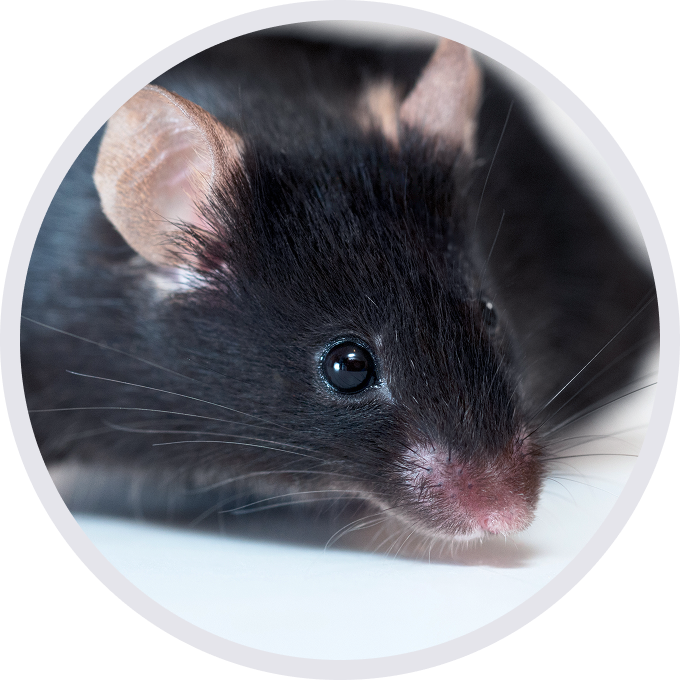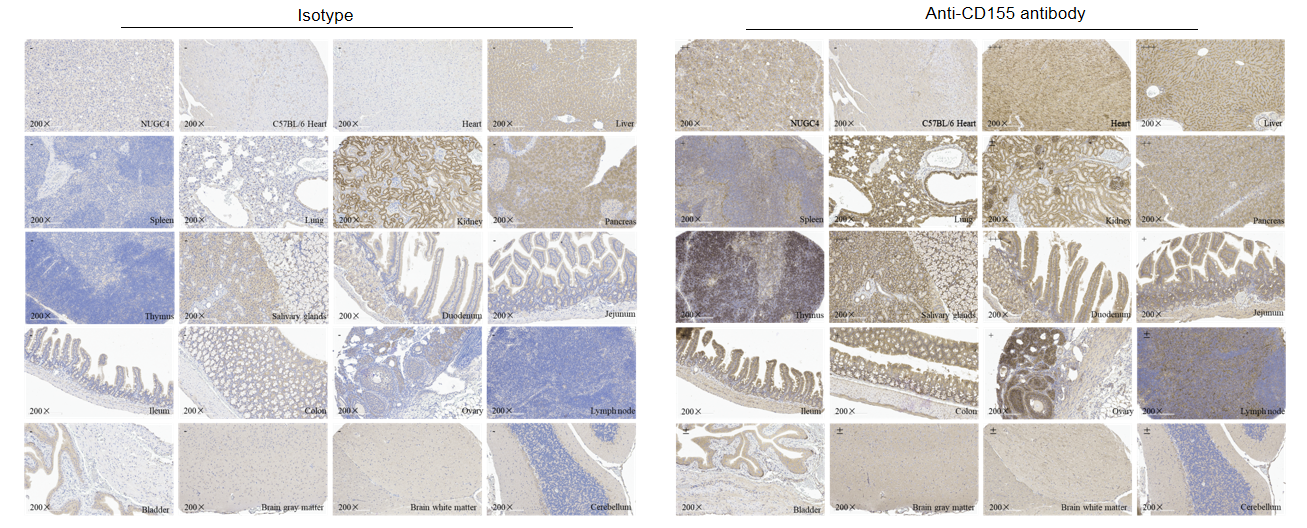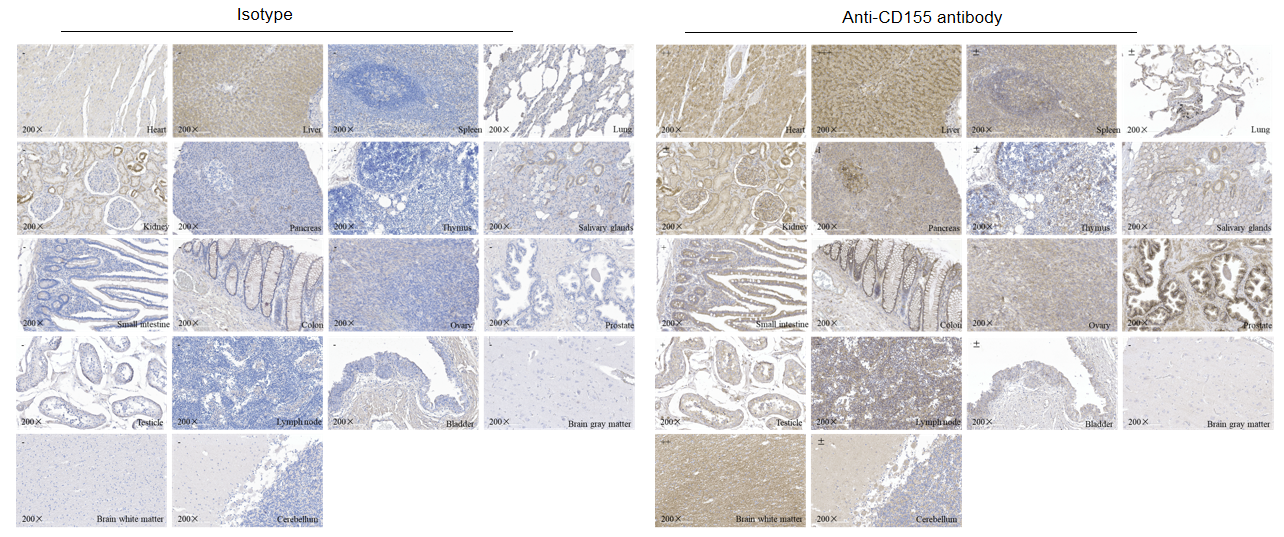
C57BL/6-Cd155tm1(CD155)Bcgen/Bcgen • 110759
Gene targeting strategy for B-hCD155 mice. The exons 2-6 of mouse Cd155 gene that encoded extracellular were replaced by human counterparts in B-hCD155 mice. The genomic region of mouse Cd155 gene that encoded transmembrane and cytoplasmic domain was retained. The promoter, 5’UTR and 3’UTR region of the mouse gene were also retained. The chimeric Cd155 expression was driven by endogenous mouse Cd155 promoter, while mouse Cd155 gene transcription and translation will be disrupted.

Strain specific analysis of CD155 gene expression in wild type (WT) and B-Hcd155 mice by RT-PCR.
Mouse Cd155 mRNA was detectable only in splenocytes of wild type (+/+) mice. Human CD155 mRNA was detectable only in homozygous B-hCD155 but not in wild-type mice.

Strain specific CD155 expression analysis in homozygous B-hCD155 mice by flow cytometry.
Peritoneal washing macrophages were collected from wild-type (+/+) and homozygous B-hCD155 (H/H) mice and analyzed by flow cytometry with species-specific anti-CD155 antibody. Mouse CD155 was detectable in wild-type mice. Human CD155 was exclusively detectable in homozygous B-hCD155 but not in wild-type mice.

The expression of CD155 in tissues of B-hCD155 mice. Different levels of hCD155 positive signals can be detected in the heart, liver, spleen, lung, kidney, pancreas, thymus, salivary gland, duodenum, jejunum, ileum, colon, ovary, lymph node, bladder and brain of B-hCD155 mice. Positive control: NUGC4; Negative control: C57BL/6 wild-type mice.The symbol in the upper left corner represents signal strength (-~+++). No positive staining (-), suspicious positivity (±), weakly positive (+), moderately positive (++), and strongly positive (+++).

The expression of CD155 in tissues of B-hCD155 mice. Different levels of hCD155 positive signals can be detected in the heart, liver, spleen, lung, kidney, pancreas, thymus, salivary gland, duodenum, jejunum, ileum, colon, prostate gland, lymph node, bladder, testis and brain of B-hCD155 mice. Positive control: NUGC4; Negative control: C57BL/6 wild-type mice.

The expression of CD155 in tissues of human. Different levels of hCD155 positive signals can be detected in the heart, liver, spleen, lung, kidney, pancreas, thymus, salivary gland, colon, ovary, prostate gland, testis, lymph node, bladder and brain of human.